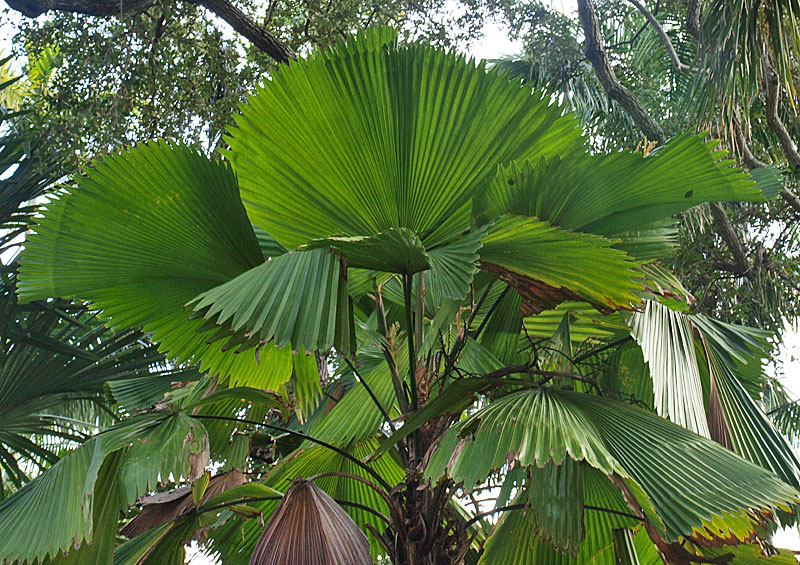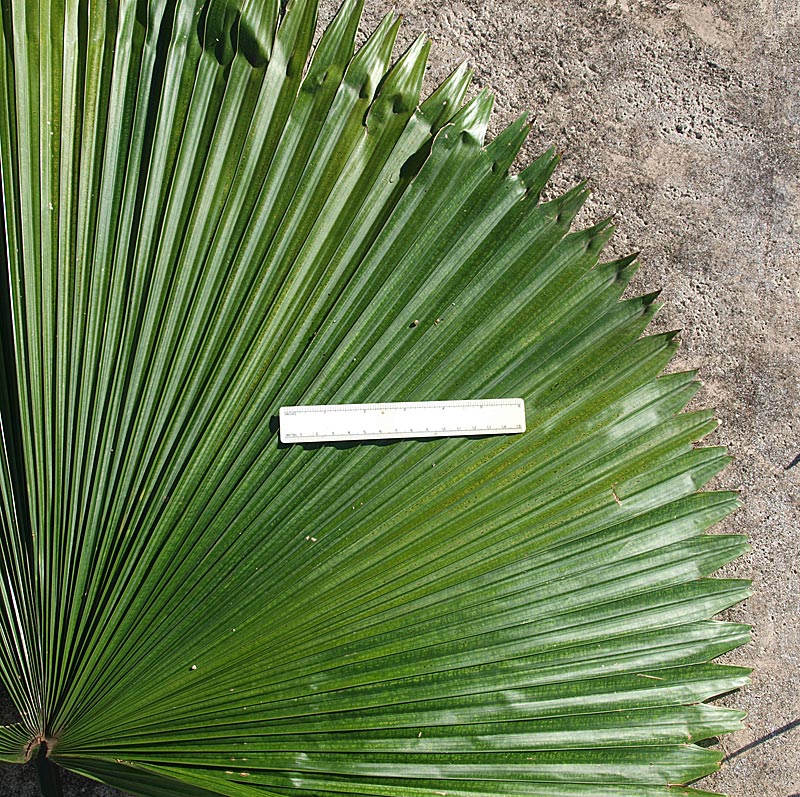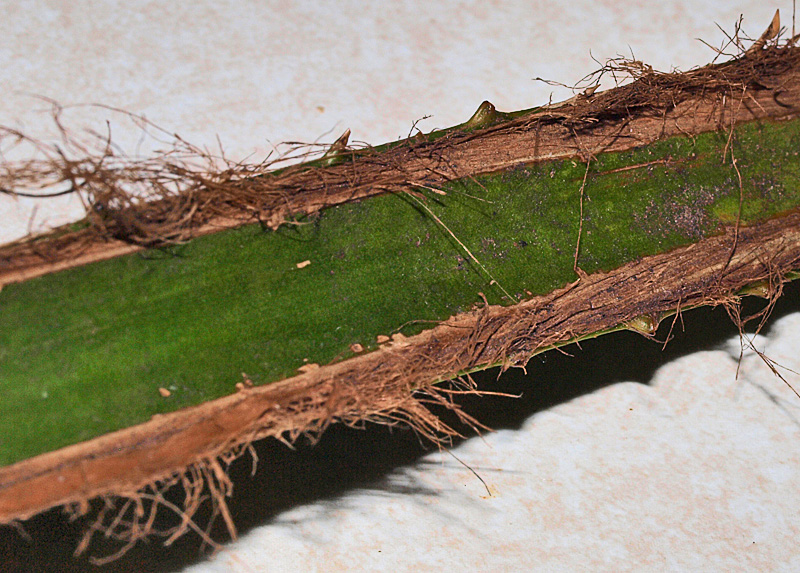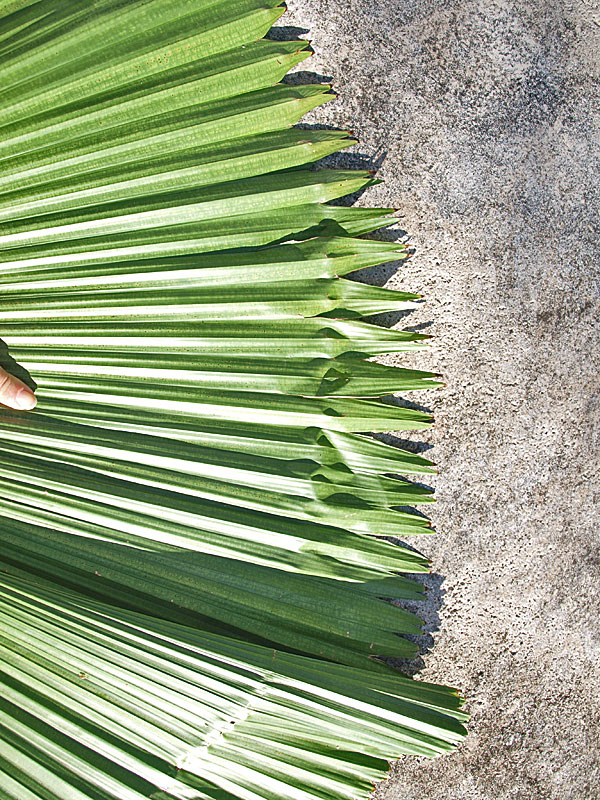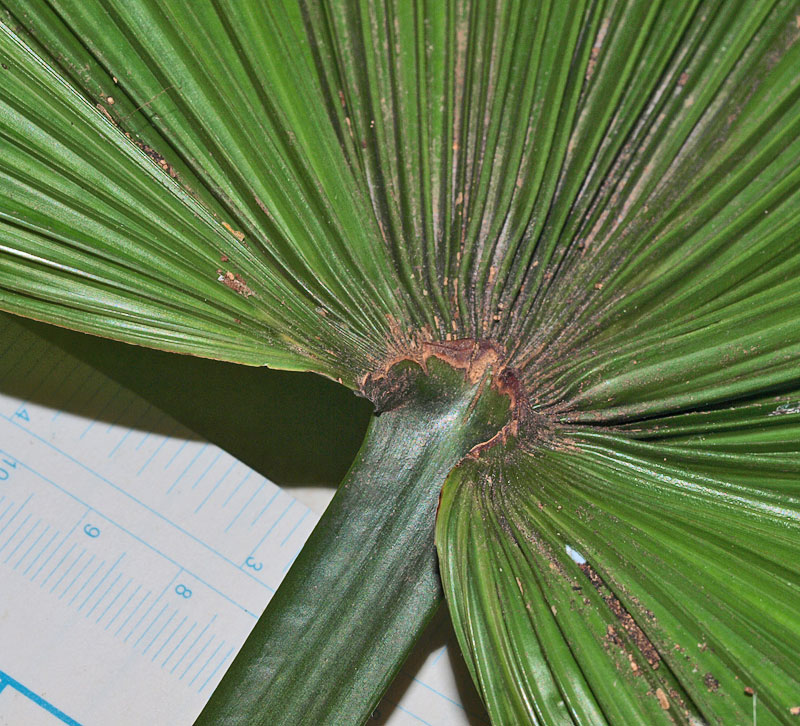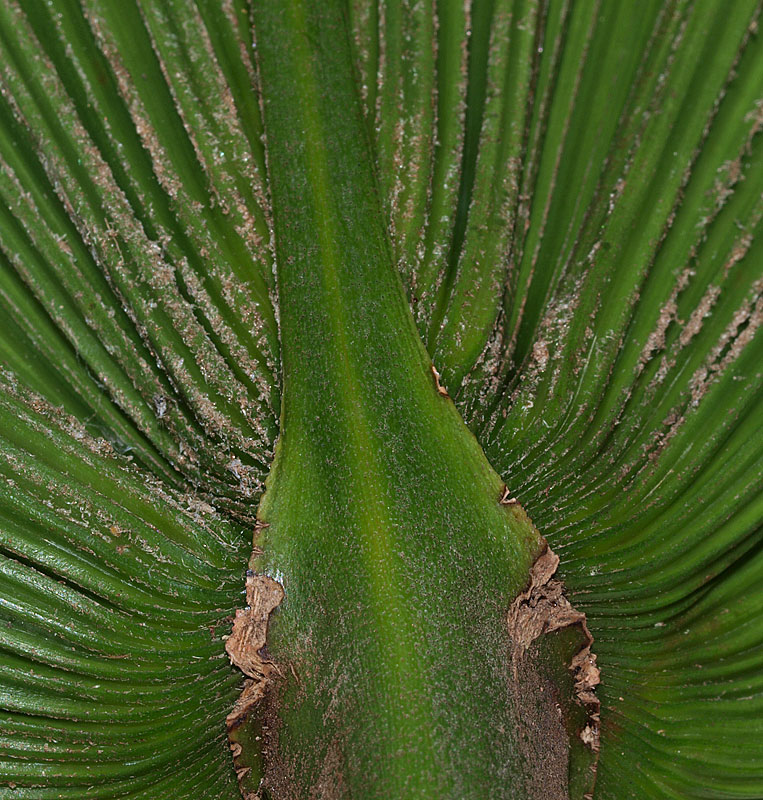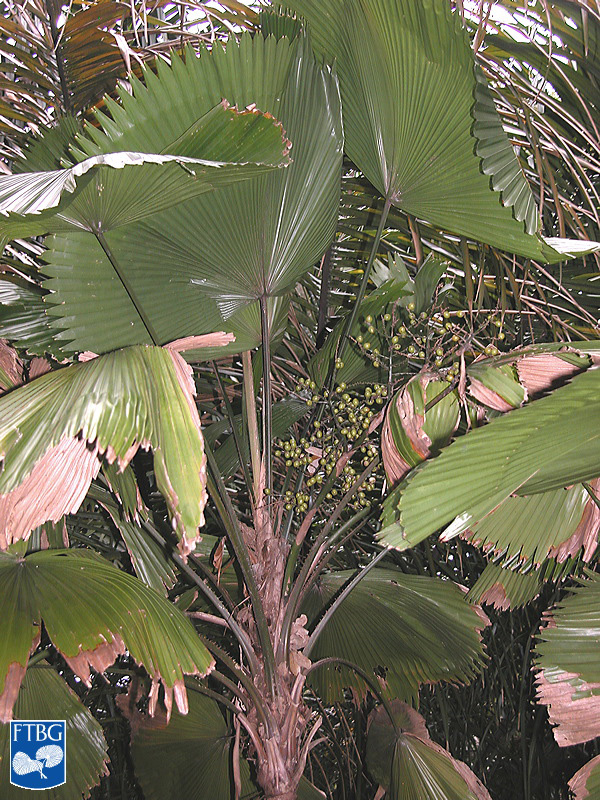Licuala grandis
|
Licuala grandis habit. Photograph courtesy of Fairchild Tropical Botanical Garden, Guide to Palms http://palmguide.org/index.php |
|
Licuala grandis canopy |
|
Licuala grandis leaf |
|
Licuala grandis petiole with fibers |
|
Licuala grandis leaf with closer view of leaf segment tips |
|
Licuala grandis hastula |
|
Licuala grandis abaxial leaf with costa |
|
Licuala grandis abaxial leaf with costa and tomentum |
|
Licuala grandis with immature fruit. Photograph courtesy of Fairchild Tropical Botanical Garden, Guide to Palms http://palmguide.org/index.php |
Common name
licuala palm, ruffled fan palm, Vanuatu fan palm
Description
Stems: Solitary, upright stems to 3 m tall and 5-8 cm in diameter, ridged with leafleaf:
in palms -- the leaf blade (which is usually divided into leaflets or leaf segments), the petiole (or leaf stalk) and the sheath (which forms the attachment of the leaf to the stem)
scars and some remnant fibers from leafleaf:
in palms -- the leaf blade (which is usually divided into leaflets or leaf segments), the petiole (or leaf stalk) and the sheath (which forms the attachment of the leaf to the stem)
sheaths. Leaves: Costapalmatecostapalmate:
a fan-shaped leaf with a midrib (costa) extending into the blade, sometimes extending far enough into the blade to cause it to curve (e.g., <em>Sabal palmetto</em>)
, with a stiff, undulating blade, undivided, but corregated, and forming a semicircle. Leafleaf:
in palms -- the leaf blade (which is usually divided into leaflets or leaf segments), the petiole (or leaf stalk) and the sheath (which forms the attachment of the leaf to the stem)
surfaces, deep green; leaftips, bifidbifid:
deeply cleft into two usually equal parts or two-lobed from the apex; for example, palms with bifid leaves or leaflet tips (e.g., <em>Chamaedorea metallica</em> has bifid leaves)
. The petiole has a prominent hastulahastula:
a flange or collar-like flap of tissue extending from the petiole where a palmate leaf blade joins it; often seen on the upper (adaxial) surface, but may also be found on the lower (abaxial) surface in some palms
and is armed toward the base with small, curved teeth along the fibrous margins. The costacosta:
mid-rib or vein
extends almost one-third the length of the leafleaf:
in palms -- the leaf blade (which is usually divided into leaflets or leaf segments), the petiole (or leaf stalk) and the sheath (which forms the attachment of the leaf to the stem)
blade. Flowers and fruits: Inflorescences (to 2 m long) are branched to three orders and extend beyond the leaves. Flowers are small, white and bisexual. Fruits are small (1-1.5 cm), spherical, and red or red-orange when ripe.
Diagnostic features
Field: Costapalmatecostapalmate:
a fan-shaped leaf with a midrib (costa) extending into the blade, sometimes extending far enough into the blade to cause it to curve (e.g., <em>Sabal palmetto</em>)
leaves, with a stiff, entire, undulating blade, forming a semicircle; both leafleaf:
in palms -- the leaf blade (which is usually divided into leaflets or leaf segments), the petiole (or leaf stalk) and the sheath (which forms the attachment of the leaf to the stem)
surfaces, deep green; leaftips, bifidbifid:
deeply cleft into two usually equal parts or two-lobed from the apex; for example, palms with bifid leaves or leaflet tips (e.g., <em>Chamaedorea metallica</em> has bifid leaves)
.
Lab: Tufts of pale tomentumtomentum:
a covering of closely matted or fine hairs on plant leaves
clothe the abaxialabaxial:
away from or the side of an organ facing away from the axis (<strong>ab </strong>as in <strong>ab</strong>andon); for example, the lower surface of a leaf blade or petiole
leaf folds.
May be confused with
Other Licuala species, perhaps, but the rounded, entire leafleaf:
in palms -- the leaf blade (which is usually divided into leaflets or leaf segments), the petiole (or leaf stalk) and the sheath (which forms the attachment of the leaf to the stem)
blades are quite distinctive.
Distribution
Native to Vanuatu
Additional comments
The leafleaf:
in palms -- the leaf blade (which is usually divided into leaflets or leaf segments), the petiole (or leaf stalk) and the sheath (which forms the attachment of the leaf to the stem)
of Licuala grandis appears palmatepalmate:
like the palm of a hand; fan palms have palmate leaves that are usually divided into leaf segments arising from a central point, although a fan palm may have entire leaves (e.g., <em>Licuala grandis</em>)
from a distance, but the petiole extends into the leafleaf:
in palms -- the leaf blade (which is usually divided into leaflets or leaf segments), the petiole (or leaf stalk) and the sheath (which forms the attachment of the leaf to the stem)
blade, forming a slender, arrow-shaped costacosta:
mid-rib or vein
.
Scientific name
Licuala grandis H.Wendl.
Family
Arecaceae/Palmae
Synonyms
Pritchardia grandis Veitch



